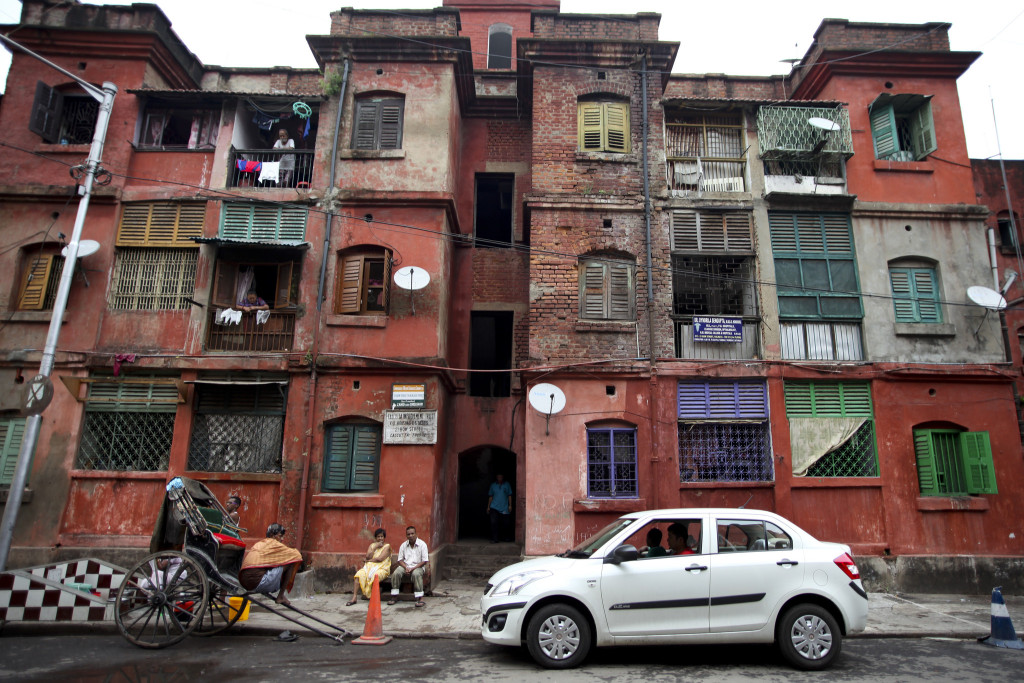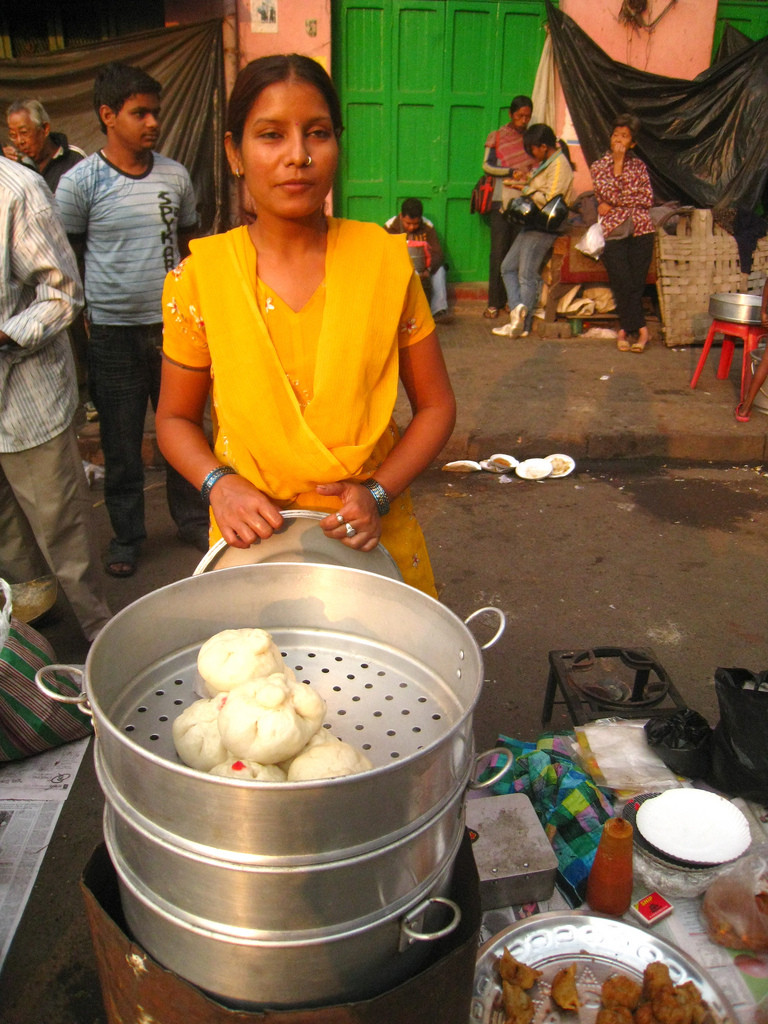Old-world charms and multi-cultural delights are discovered in ‘dirty Calcutta’
By Sohini Chattopadhyay | 1 December 2015
The grey, gorgeous sulk of the Kolkata monsoon is best spent in bed, listening to the intense, melodic rain. Another way, equally endorsed, is dreaming with a book and a pot of tea, preferably, with the phone switched off.Home for the rains this time and thankfully without anything useful to do, I discovered a third way – unexpectedly outdoors.
On a grey Sunday morning in July, I made my way stiffly to join a group of five for a walking tour of central Kolkata, resentful that I had delayed the group by four minutes. My co-walkers are an American family, and I imagined they were judging me for my Indian tardiness. But Iftekhar Ahsan, the leader of the walk, waved away my apology so cheerfully that I felt the sullen knot in my chest loosen.
Ahsan was taking us on a tour of the most culturally diverse part of the city, the Kolkata that came up between the older Black Town of Bengalis and the White Town of European settlers, literally the grey area, as Ahsan called it. Dirty Calcutta, my father had called it the evening before, looking at the map of the walk; his words unfortunately proved to be too true. It was dirty. And it was wet. But it was still the most fun I’ve had in a while.We began with a stop at a Buddhist temple and dharamshala, built at the turn of the 20th century, plain but clean. The temple sits at the doorstep of the Anglo-Indian quarters of the city called Bow Barracks. (Families are said to brew wine here and the few bottles available for purchase are much sought-after, but I haven’t been able to vet that recommendation.) The place, Ahsan reminds us, got its name from the American Army quarters set up here during WWI, but has been home to the Anglo-Indian community for nearly two centuries.

Bow Barracks in Kolkata is a World War I settlement.
Photograph by Nicolas Mirguet, used under Creative Commons license from Flickr
Happily, the walking tour ticket includes stops for chai and snacks and irresponsible treats. We stop for chai in a slushy, fetid alley at a store displaying a handsome golden batch of kachoris and samosas. Kolkata chai, served in shapely kulhads, is a marvellous brew, but the cup we stop for is especially memorable. Malt-flavoured, but not killing you with milkiness. And like any good brew, it encourages conversation: I make friends with the American family over my first cupful.
A couple of narrow, slushy gullies ahead is the second Parsi temple of Kolkata. Built 1912, it is a dignified, understated building, fiercely clean and well-maintained. The first was opened in 1839, which means the Parsis have been in Kolkata for about 200 years. We see this later in the walk, a grander structure with impressive white columns and tall slatted windows, despite the years of wasting away in abandonment. Everywhere there is dust and the thick musty air of neglect. A dispute between two families who own the temple led to the closure. Unexpectedly, we see one of the owners later on, a tall, hunched, beaky man walking down the street slowly – Scrooge come to life.
The Chinese chapter of the walk is more detailed than the others, introducing us to more than the community’s place of worship. And it is especially lovingly rendered, possibly because of Ahsan’s affinity for the area (he went to school in the locality and had plenty of Chinese classmates). A more textured portrait of the community emerges as a result, the sense of a living community and its various imprints on the city. In addition to two fragrant temples, we visit a mahjong club where men gather to play the game, and are pointed out typical Chinese businesses such as a dental clinic and a furniture store in the area. (Far more common Chinese businesses in Kolkata are leather stores, hairdressing salons, dry cleaners and, of course, restaurants.)
We stop for the fabled Chinese breakfast at Tiretta bazaar, but manage to sample only a couple of fish dumplings, balancing umbrellas on our shoulders. It’s also fabulously dirty here, with piles of refuse all around.

A momo vendor at Tiretta Bazaar. Photo by flippy whale, used under Creative Commons license fromFlickr
The breakfast gods, however, are pleased with us (the bounty of a morning of unaffected, multi-cultural obeisance, perhaps). At the second of the Chinese temples on our itinerary, we are invited to a birthday celebration. It is the Chinese warrior god Guan Di’s birthday, and there is a roasted pig, some roast chicken, large pork dumplings, sweet rice dumplings and regular Indian chai. We settle down with plates and listen to stories of relatives settled abroad from the chattier Chinese temple-goers. It is a narrative we hear from Ahsan as well: the Chinese are migrating to Canada and Australia and New Zealand in search of better economic opportunities. From some accounts, there are only about 2,000 Chinese people in Kolkata today.
The Jews have a less conspicuous socio-economic presence in the city today than the Chinese, but have left behind a more impressive imprint on the physical landscape. The Jews who settled in Calcutta are mainly from Baghdad and Syria. There are five synagogues in the city, but only two are in use: Beth-El and Magen David. Both are sites protected by the Archaelogical Survey of India. We admire the stately, creamy yellow façade of Beth-El (built 1856) from the outside, munching on Gujju gathiya and raw papaya salad (who’d have thought?). Five minutes’ walk away, the red spire of Magen David synagogue (built 1884) soars over the congested central Kolkata landscape. The synagogue is open, and we step inside a pristinely-maintained hall with carved columns and stained glass. There is even a large, raised altar-like space, but it is empty. It looks almost like a church, except there is no cross. It is peaceful and calming like a church, too. We sit in the cool, dark hall, tired from the walking and the humidity, and fall into conversation. We stay for nearly an hour before the lights are switched off and we’re asked sweetly to leave.
Our last stop is the Armenian church of Kolkata, a clean white building that has weathered its age remarkably well. The church was built in 1764, but looks unjaded by the years. The Armenians were early traders in India: their presence is documented in the 17th century. The accompanying churchyard is full of graves and it is disconcerting as always to walk on dead people, but even more so when the graves are well-maintained and white, and the names so visible. Like everything Armenian I have visited, there is a memorial to the Armenians murdered in the Turkish genocide of the 20th century – the first recorded genocide.
It is noon by the time we finish, a good two hours later than the projected end-time. But this elasticity is, in fact, nice. Ahsan tells stories well and appreciates the richness of a good conversation. He knows when a conversation is warming up, and he likes to keep it going. He is generous with his time, he doesn’t hurry along to the next stop. These walks are an intelligently modified form of flânerie. Writing in the 20th century, philosopher Walter Benjamin said: “…[the flâneur] was a figure of the modern artist-poet, a figure keenly aware of the bustle of modern life, an amateur detective and investigator of the city…” As it happens, when filmmaker Dibakar Banerjee was in Kolkata shooting for his film featuring the fictional Bengali sleuth, Byomkesh Bakshi, he called on Ahsan for locations.
I am an expert catcher of colds, and those hours in the drizzle cost me heavy. I am in bed sneezing the next week, but I don’t regret it. Every day, I look up something from the walk on the Internet: the Armenian College, Chinese dental clinics, Parsi sweet shops in the city. Every day, I love this city a little more.
The Melting Pot Walk is one of 10 walks offered by Calcutta Walks; between 7am and 10am on a day of your choosing; Rs 1,500 per person; calcuttawalks.com; 033-40052573
http://www.outlooktraveller.com/trips/heritage-walk-kolkata-1006980
This strolling piece originally appeared in Outlook Traveller magazine